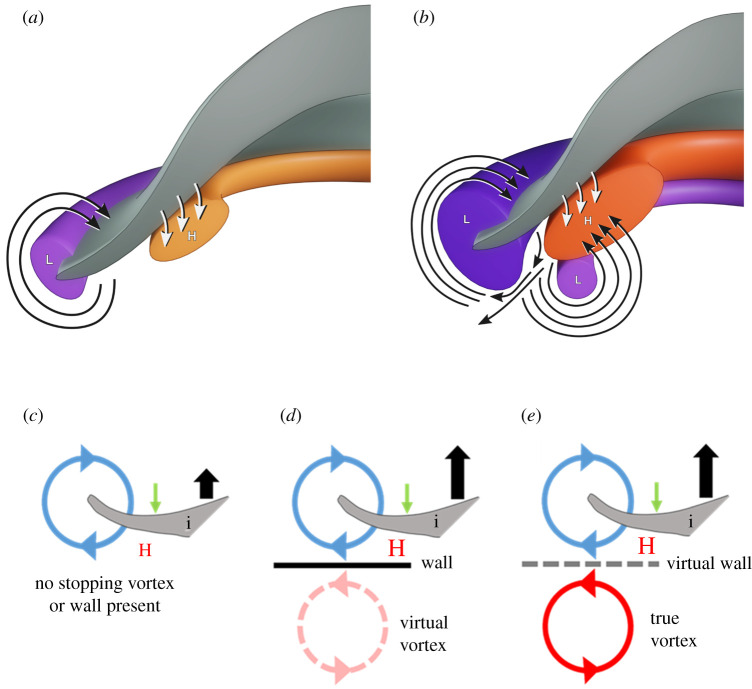Figure 5.
Diagrammatic representations of water movement and pressure anomalies due to kinematic movement of the jellyfish bell. Note: a cross section through only one half of the animal is depicted (grey surface) for simplicity. (a) Jellyfish swimming without a developed stopping vortex underneath the bell. (b) Jellyfish swimming with a developed stopping vortex underneath the bell. Red areas denote regions of above ambient pressure and blue regions denote regions of below ambient pressure. Darker colours represent higher magnitudes of pressure. Blue lines show the direction of fluid motion. Green arrows show the direction of movement of the bell margin during the contraction phase and black arrows depict the relative forward thrust generated. (c) Away from any solid boundary and without the presence of an additional opposite sign vortex. (d) Ground effect case where swimming near a solid boundary produces an opposite sign virtual vortex and results in greater positive pressures compared to (a). Adapted from [8]. (e) Away from a solid boundary with a real opposite sign stopping vortex present. This case represents a jellyfish undergoing routine swimming and results in a ‘virtual ground effect’ thrust benefit similar to (b). Jellyfish bell margin represented by symbol (i). Green arrows denote direction of propulsor motion and black arrows denote relative thrust generation. Size of the letter ‘H’ denotes the relative strength of high pressure. (Online version in colour.)

